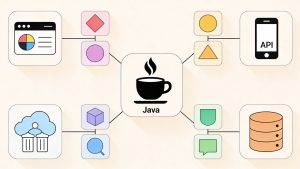In the realm of enterprise-scale software development, a new architectural paradigm is gaining traction: Micro Frontends. This approach, which extends the concept of microservices to the frontend, promises to revolutionize how large-scale applications are built and maintained, particularly in complex, multi-team environments.
The Rise of Micro Frontends
Micro Frontends represent a significant shift in how enterprise-scale software systems are implemented. This architectural style involves breaking down a monolithic frontend into smaller, more manageable pieces, each owned by a separate cross-functional team. The primary goal is to enhance efficiency by minimizing inter-team coordination and allowing for greater autonomy.
Key Advantages:
- Team Autonomy: Individual teams can work independently, making decisions that best fit their goals both architecturally and technologically.
- Efficient Deployment: Teams can deploy their parts of the application separately, reducing bottlenecks.
- Scalability: It’s easier to onboard new team members and scale development by adding more micro frontends.
- Faster Release Cycles: Autonomous teams can push updates more frequently.
Potential Challenges:
- UI/UX Consistency: Individually developed micro frontends may lead to inconsistent user experiences.
- Performance Concerns: Loading multiple applications can increase bundle sizes and affect loading times.
- Integration Complexity: While individual applications may be simpler, integrating them into a cohesive whole presents its own challenges.
Native Federation: A Bridge to Micro Frontend Architecture
To address the challenges of implementing Micro Frontends, especially with Angular, a community project called Native Federation has emerged. This project builds upon web standards and provides close integration with the Angular CLI.
Key Features of Native Federation:
- Portability: Focuses on ECMAScript modules and Import Maps.
- Angular CLI Integration: Seamlessly integrates with Angular’s ApplicationBuilder.
- Dependency Sharing: Allows sharing of dependencies like Angular or RxJS between host and remote applications.
- SSR and Hydration Support: Critical for performance in applications like public portals and web shops.
Implementing Micro Frontends with Native Federation
Native Federation provides a straightforward setup process using Angular CLI schematics. It allows developers to define remotes, hosts, and shared dependencies easily.
Example Configuration:
javascript
const { withNativeFederation, shareAll } = require('@angular-architects/native-federation/config');
module.exports = withNativeFederation({
name: 'mfe1',
exposes: {
'./Component': './projects/mfe1/src/app/app.component.ts',
},
shared: {
...shareAll({}),
},
// Additional configuration options
});
This configuration sets up a micro frontend, exposing specific components and sharing dependencies.
Conclusion: Balancing Benefits and Challenges
While Micro Frontends offer significant advantages for enterprise-scale applications, they also come with trade-offs. The decision to adopt this architecture should be based on careful evaluation of project needs and team capabilities.
Native Federation emerges as a promising solution, bridging the gap between the Micro Frontend concept and Angular’s strengths. It provides a path forward for teams looking to leverage the benefits of Micro Frontends while mitigating some of the inherent challenges.
As the software development landscape continues to evolve, Micro Frontends and tools like Native Federation represent an exciting frontier in building more scalable, maintainable, and efficient enterprise applications.
Read more such articles from our Newsletter here.



